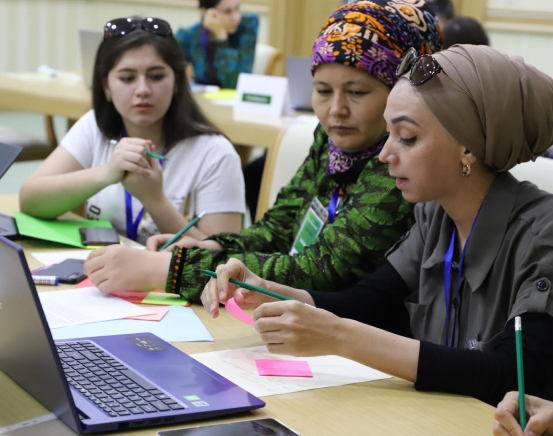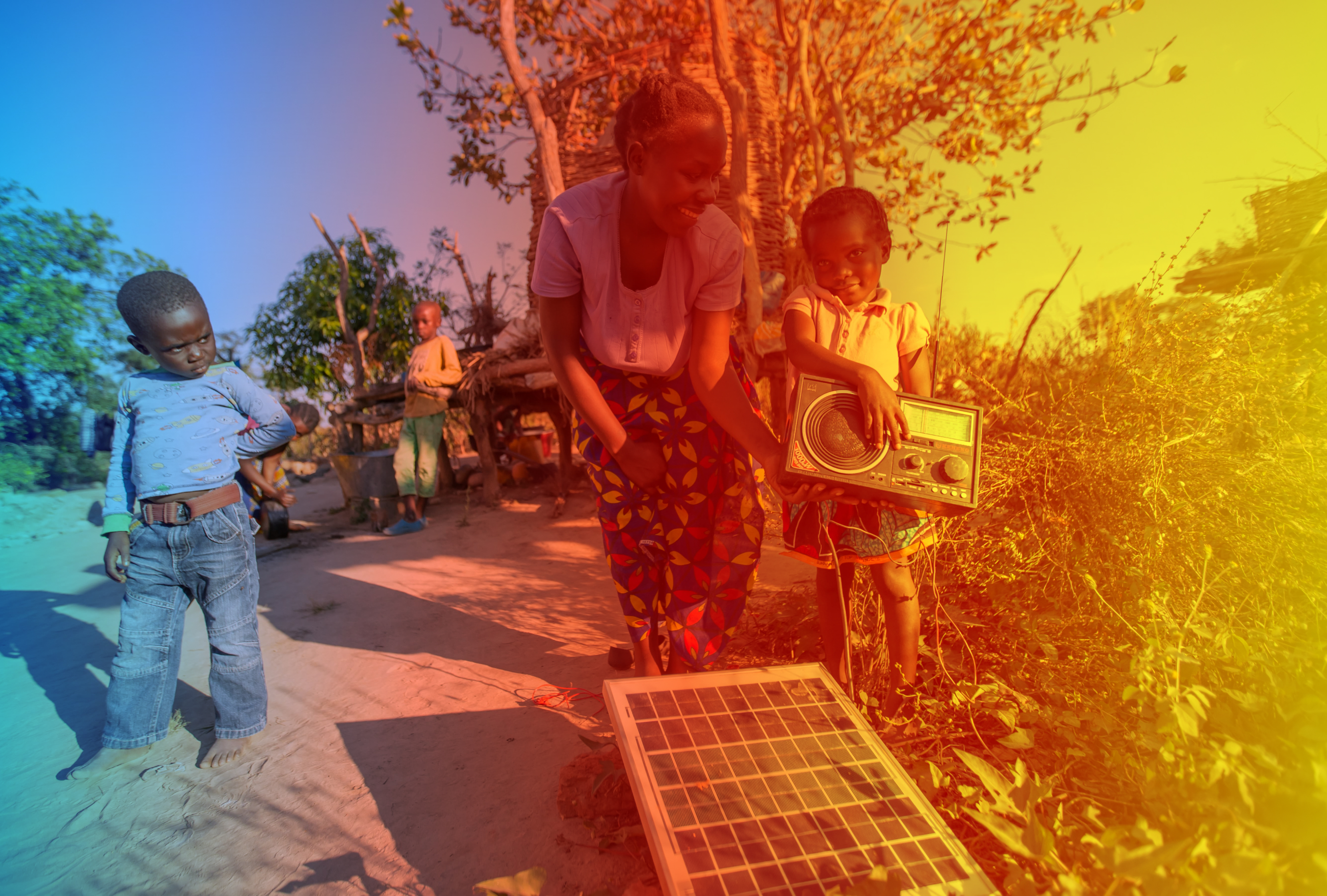The Digital Readiness Assessment aims to identify and prioritise digital interventions as part of a country’s digital transformation journey. This assessment highlights the current digital context of a country – from a context where basic digital foundations may be lacking, or incomplete, through to the case of a country where digital is a central tenet of national growth and development (‘stages of digital readiness’).
In order to drive digital change, the assessment is structured around five core pillars of digital transformation: infrastructure, government, regulation, business, and people.
The survey aims to provide a rapid diagnostic of a country’s digital progress, in order to drive further digital transformation progress. It aims to provide high-level insights into a country’s digital strengths and weaknesses. The Digital Readiness Assessment is complementary to other tools, and has been designed to align with – and augment – existing tools and processes used by governments.
The Digital Readiness Assessment is not an in-depth review of a country’s existing initiatives, or a detailed landscape analysis. It has been designed as a rapid diagnostic tool, to drive immediate and sustained digital progress.
The Digital Readiness Assessment is principally for national and local governments, and UNDP Country Offices. It is intended to serve as an entry-point for increased engagement between governments, UNDP Country Offices, and a broad range of UNDP and partner experts.
The Digital Readiness Assessment is a survey-based tool, delivered via a data collection solution. Responses can be collected via a web-link, or in-person using pre-set tablets or smartphones (see question six, below). The assessment combines the results from the survey tool with external data – this includes integration with relevant national and global external data sources. This aims to provide a holistic snapshot of the digital readiness of a country.
The assessment is founded on a standardised questionnaire, and all questions should be asked (except those which are prohibited or not applicable in a particular country). Many of the questions are asked to all stakeholders – central and local government, private sector actors, civil society organisations, and private citizens – but a number are only asked to particular groups.
The assessment does not aim for statistical significance or national representativity. Careful consideration should be given to identifying high-quality respondents, with strong knowledge and expertise of the digital state of the country, and not focusing on ‘quantity’ of respondents.
Getting responses to any survey can be difficult, particularly when trying to engage senior or busy stakeholders. Approaches that have been successful in conducting the assessment in other countries include:
-
Gathering all key stakeholders for a workshop, where the assessment is introduced – and time is allocated for responses to be collected during the course of the meeting (using their own, or UNDP- provided devices). Lunch can also be served!
-
Leveraging key intermediaries, such as business associations, civil society networks, and international development partners.
-
Scheduling face-to-face meetings, COVID-19 restrictions permitting, to allow a member of UNDP Country Office staff to ask the questions directly. This could also be done virtually.
-
Incentives (for example, a prize-draw of all respondents) have not yet been explored in any country.
The commissioning of the assessment includes a senior member of the local or national government. This ensures senior sponsorship and buy-in from the outset, and this credibility and connection can also be used to encourage responses. For example, the UNDP Digital Readiness Assessment team can draft a template email to be sent by this senior stakeholder, inviting responses to the assessment.
‘Digital transformation’ is not a destination, but a journey. It is about using digital and technology to improve the lives and livelihoods of individuals, communities, and countries. This ranges from improving public services, to tackling issues of marginalisation. Digital transformation is fundamental to every one of the Sustainable Development Goals – and is likely to be crucial in building forward better following the COVID-19 pandemic. For governments, digital transformation can improve the speed and success of engaging citizens – and delivering crucial services. It can also lead to efficiencies in cost and time, and is an important driver in positioning societies and economies for the Fourth Industrial Revolution.
The overall survey results are owned by the partner government. However, individual responses remain confidential to ensure that individuals feel comfortable sharing their perspective in responding to the assessment.
Data is collected and stored on private UNDP cloud services. These are accessible only to select members of the UNDP Digital Readiness and UNDP Digital teams. Data is secured using two-factor authentication.
Anonymised raw results can be shared upon request. However full interpretation and analysis would require the UNDP methodology.
Data collection and usage will follow the UNDP Data Principles. Digital Readiness Assessment data is kept private, using the above processes. It will only be used for the country’s Digital Readiness Assessment process, and to improve the assessment product and service.
Any data collected through the survey will not be shared in any public forum without the written permission (via email, or similar) of the respective government. Only publicly available data, and any public announcements of insights or actions taken based on the Digital Readiness Assessment, will be shareable. Any publicly-available data will be used according to its respective permissions or licenses.
The current version of the Digital Readiness Assessment is not designed to be comparative.
All data will be anonymised. For survey respondents, any personally-identifiable data will be removed prior to analysis and will not be shared. Any national-level insights that are compiled and shared beyond the country will be anonymised (i.e. Country X).
Building on the assessment, the UNDP Digital Readiness Assessment team has shaped an initial bespoke digital ‘menu’ across the five areas. This sets out core objectives for each pillar aligned with the Sustainable Development Goals, aims to be tech-agnostic (to ensure future-proofing), and provides a range of options to account for varying national and local priorities and contexts.
Each of the five topics – infrastructure, government, regulation, business, and people - has two central pillars: policy and legislation, and innovations and interventions. This menu provides local and national officials, supported and guided by UNDP Country Offices, to take meaningful steps in their digital transformation journey.
Following the Digital Readiness Assessment, national and local government officials will review the range of potential opportunities to identify immediate and longer-term priorities. These will then be shaped to the local context – ensuring sustainability throughout the collaboration, and beyond.
Digital Readiness Assessments have been undertaken in countries around the world. In one country, it has directly informed the development of a nationwide ‘smart vision’. Elsewhere the findings of the analysis have played a key role in supporting national digital transformation strategies, policies, and approaches. In addition, the Digital Readiness Assessments have also identified key entry-points and opportunities for digital transformation in the near- and longer-term.
The Digital Readiness Assessment is not a strategy tool. However, the results and insights of the assessment – and accompanying analysis – could inform strategy development. As highlighted above, this has occurred in a number of countries.
UNDP works in around 170 countries and territories around the world. In each of these contexts, digital is an emerging or constant priority. UNDP - through our network of Country Offices, Accelerator Labs, Regional Hubs, headquarters, and other teams – is working with local and national governments around the world to leverage the potential of digital transformation. This work ranges from rolling-out crucial digital infrastructure in the very last mile, through to shaping inclusive digitalisation. UNDP is also working at the cutting-edge: we are leading advanced digital explorations in the context of the Fourth Industrial Revolution, and exploring emerging technologies such as blockchain, artificial intelligence, and Big Data.


 Locations
Locations



















